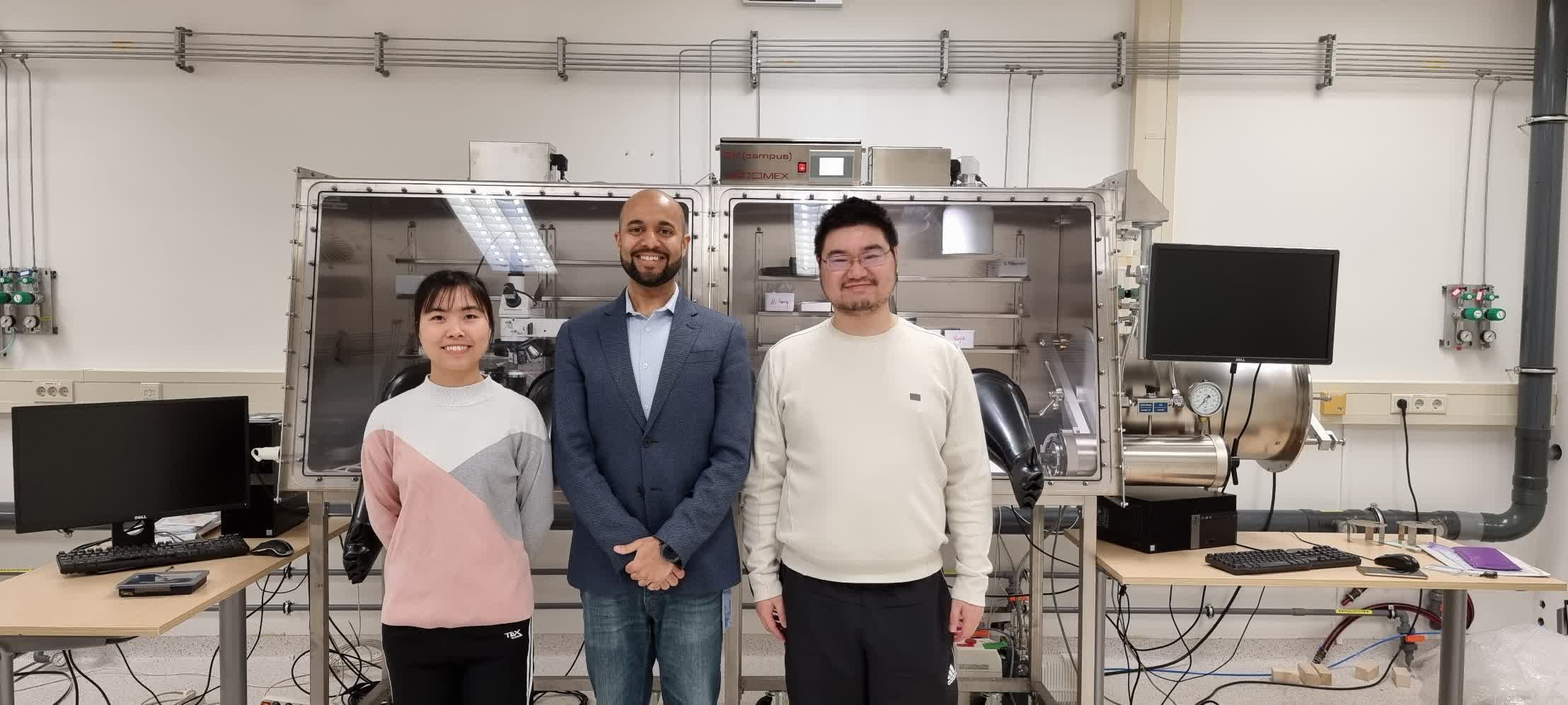Why it matters: Modern computers are based on semiconductors, partially because they can direct a current in one direction. Doing that in a superconductor has been thought impossible for over a century, but researchers in the Netherlands have found a way. The discovery could make computers hundreds of times faster than they are currently.

This week, researchers at the Delft University of Technology published a paper on how they achieved one-directional superconductivity. This could let computers replace semiconductors with superconductors, which can carry a current indefinitely with no energy loss, potentially increasing computer speeds by orders of magnitude.
According to Associate Professor Mazhar Ali, superconductor-based computers could reach speeds up to a terahertz. Superconducting might not be usable for consumer computers in the near term, but Ali thinks server farms and supercomputers could implement it.

Ali (middle), along with fellow researchers Dr. Yaojia Wang (left) and Dr. Heng Wu (right)
Normally, currents run through superconductors without any resistance, which makes stopping or directing their flow impossible. Ali says his group was able to do it by sandwiching a quantum material between two semiconductors.
Currently however, the research team has only tested the method at extremely low temperatures. Thus far, any superconductor-based system using this process would be extremely sensitive to heat. Ali's team plans to see if the method can work at temperatures above 77 Kelvin (about -321 Fahrenheit), at which point computers might be able to use these superconductors with the help of liquid-nitrogen cooling. The next step will be to figure out how to produce enough superconductors for a chip.
The (im)possibility of applying superconducting
In the 20th century and beyond, no one could tackle the barrier of making superconducting electrons go in just one-direction, which is a fundamental property needed for computing and other modern electronics (consider for example diodes that go one way as well). In normal conduction the electrons fly around as separate particles; in superconductors they move in pairs of twos, without any loss of electrical energy. In the 70s, scientists at IBM tried out the idea of superconducting computing but had to stop their efforts: in their papers on the subject, IBM mentions that without non-reciprocal superconductivity, a computer running on superconductors is impossible.